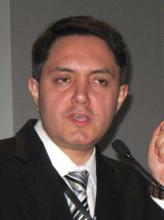The use of continuous positive airway pressure modestly reduced blood pressure in two separate studies involving obese patients who had moderate to severe obstructive sleep apnea, according to reports published online June 11 in the New England Journal of Medicine.
In contrast, neither the use of supplemental oxygen in one study nor a weight loss of approximately 7 kg in the other study had a beneficial effect on blood pressure.
In the first study, investigators compared the effects of CPAP against those of nocturnal supplemental oxygen on several markers of cardiovascular risk, including blood pressure. The multicenter study involved cardiology patients aged 45-75 years who either had established coronary heart disease or multiple cardiovascular risk factors, and who also were found to have obstructive sleep apnea when screened for the disorder.
The 318 patients were randomly assigned in equal numbers to receive CPAP plus education in healthy lifestyle and sleep practices, nocturnal supplemental oxygen delivered via cannula plus lifestyle and sleep education, or lifestyle and sleep education alone (the control group) for 12 weeks, said Dr. Daniel J. Gottlieb, of the Veterans Affairs Boston Healthcare System, and his associates.
The mean body mass index was 33.0 kg/m2 in the CPAP group, 34.7 kg/m2 in the supplemental oxygen group, and 33.7 kg/m2 in the education group. Average apnea-hypopnea index scores for the three groups were 25.4, 24.0, and 25.5 events per hour, respectively
At the end of the study, 24-hour mean arterial blood pressure was significantly lower among patients in the CPAP group (87.8 mm Hg) than with oxygen (90.2 mm Hg) or education alone (89.0 mm Hg), a "modest" difference in magnitude that nevertheless has been associated with "a meaningful reduction in cardiovascular risk," the investigators noted.
That benefit was seen even though those patients’ blood pressure was already well controlled by antihypertensive medications and even though their adherence to CPAP was only "average," said Dr. Gottleib, who is also at Brigham and Women’s Hospital and Harvard Medical School, Boston, and his colleagues.
In contrast, mean arterial blood pressure was not significantly different between patients who received supplemental oxygen and the control group, even though the supplemental oxygen did reduce nocturnal hypoxemia and adherence to oxygen therapy was much better than that for CPAP. A further analysis adjusting for potential confounders such as patient age, sex, race, body mass index, and type of antihypertensive medication had no appreciable effect on the results.
"This study offers no support for the common but largely untested clinical practice of providing supplemental oxygen as salvage therapy in patients with obstructive sleep apnea for whom CPAP is problematic," Dr. Gottlieb and his associates reported (N. Engl. J. Med. 2014;370:2276-85 [doi: 10.1056/NEJMoa1306766]).
In the second study, researchers compared the effects of 24 weeks of CPAP alone, weight loss alone, or CPAP plus weight loss in obese adults who had moderate to severe obstructive sleep apnea and elevated C-reactive protein levels. A total of 181 patients underwent randomization, but only 136 completed the study: 48 in the CPAP group, 42 in the weight-loss group, and 46 in the combined-intervention group, said Dr. Julio A. Chirinos, of the Philadelphia Veterans Affairs Medical Center and the University of Pennsylvania, and his associates.
At the conclusion of the intervention, weight loss was similar between the weight-loss–only group (6.8 kg) and the combined-intervention group (7.0 kg), while there was no change in the CPAP-only group.
The study’s primary endpoint was improvement in C-reactive protein levels. There was no significant difference among the three study groups for this outcome. However, the secondary outcome of significantly decreased systolic blood pressure was achieved with the combined intervention (–14.1 mm Hg), compared with weight loss alone (–6.8 mm Hg) or CPAP alone (–3.0 mm Hg).
The combined therapy also improved insulin resistance and serum triglyceride levels, Dr. Chirinos and his associates said (N. Engl. J. Med. 2014;370:2265-75 [doi: 10.1056/NEJMoa1306187]).
"Our study shows that a weight-loss intervention is effective as a central component of the strategies used to improve the cardiovascular risk-factor profile in patients with obesity and obstructive sleep apnea," they added.
Dr. Gottlieb’s study was supported by the National Heart, Lung, and Blood Institute (NHLBI) and the National Center for Research Resources. Philips Respironics donated the equipment used in the study. Dr. Gottlieb reported ties to Philips Respironics and ResMed Corporation, and his associates reported ties to numerous industry sources.
Dr. Chirinos’s study also was supported by the NHLBI. ResMed provided CPAP equipment at no cost but had no role in study design, data accrual or analysis, or manuscript preparation. Dr. Chirinos reported no financial conflicts of interest; his associates reported ties to Boehringer Ingelheim, ConAgra Foods, Novo Nordisk, Nutrisystem, Orexigen, Tate and Lyle, United Health Group, and Weight Watchers.


